Does Microneedling Hurt?: 7 Ways To Help Minimize The Pain
Does Microneedling Hurt?: 7 Ways To Help Minimize The Pain
There’s no magic pill to wake up with younger, smoother and clearer skin. However, microneedling may be the next best option. Also known as collagen induction therapy, microneedling is a minimally-invasive cosmetic treatment that uses a device with tiny sterile needles to create small wounds on the outermost layer of the skin. The skin’s wound healing process stimulates collagen production to promote cellular turnover and resurfacing, leaving you with more skin elasticity. Microneedling is commonly used on the face and under the eyes to reduce acne scarring, enlarged pores, dark spots, under-eye bags, sun damage, fine lines and wrinkles. On the body, microneedling treats scars and stretch marks – typically on the stomach or thighs.
Even with the considerable benefits of microneedling, it’s normal to worry about pain during the procedure. Fortunately, most individuals say that they do not consider the process to be painful. Thanks to many preparation factors, microneedling generally causes some discomfort but does not necessarily hurt. However, pain is subjective, so it makes sense to ensure that you set yourself up to have the most pleasant experience possible.
Whether you’re still deciding to book an appointment or already have one scheduled, here are some of the best tips to help you minimize pain during your microneedling treatment.
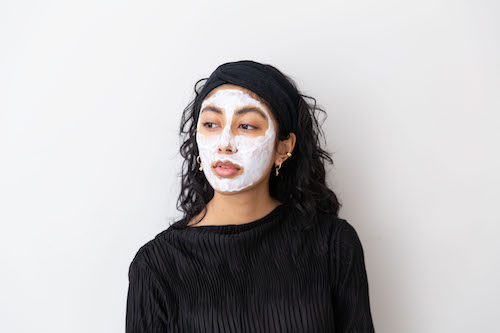
Find The Right Dermatologist (Or Professional Medical Aesthetician)
For your safety and stellar results, it is essential to do your research to find the best dermatologist or trained expert who offers microneedling services in your area. Make sure to read several testimonials on the doctor, their practice or the medspa that you’re considering. Check all of their certifications and licenses beforehand. If possible, try to get a recommendation from someone you trust.
In your consultation, make sure to address concerns, such as your pain tolerance, resistance to any numbing products, skin thickness, skin treatment history, the device used, needle thickness and the recommended depth of needles during your treatment.
Along with in-office care, finding the right expert will be the most valuable resource during the after-care process. They will inform you how to best wash, moisturize and take care of your skin during the microneedling healing process, explain what activities or products to avoid and how long to wait in-between treatments. They also can share personalized recommendations based on your skin type, lifestyle and other considerations you discuss during your appointment.
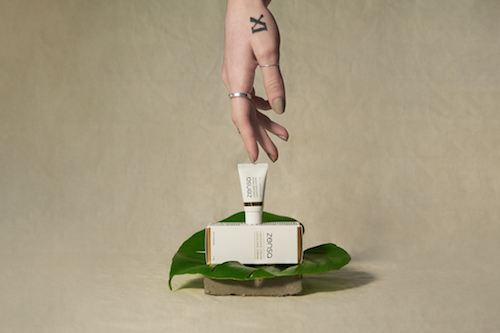
Use Numbing Cream
In most cases, your dermatologist or medical aesthetician will apply a numbing cream to your face or body for 30-45 minutes (depending on the area) before the microneedling begins. Zensa Numbing Cream contains 5% lidocaine, the highest percentage available over-the-counter, for maximum numbing without risks like adverse skin reactions or delayed healing times.
Aly Lalani, our in-house anaesthetics expert, debunked a common myth that using products containing even higher caine percentages results in a less painful treatment experience. “If you have huge percentages of an active ingredient in your formulation, and it is formulated poorly, very little will be able to absorb through the skin, and causing the topical anaesthetic as ineffective, “ he shared.
A small percentage (around 5-10%) of individuals have a genetic mutation that makes them resistant to lidocaine’s numbing effects. However, most people who don’t feel its numbing effects often do not have product applied properly or the skin prepped well enough for the topical anaesthetic to absorb properly. Make sure to exfoliate the area well before your microneedling appointment for better numbing cream absorption and to minimize any potential pain.
Right before the procedure begins, your expert should follow these 3 easy steps for proper Zensa Numbing Cream application, which we like to call our Clean + Apply, Wait and Wipe method:
-
Clean the skin thoroughly using an alcohol swab, and use a sterile applicator to apply a very thick layer (1-2 cm) of the numbing cream. Reapply to cover the area if needed. Do not rub it in.
-
Leave the cream on for at least 30-40 minutes before the microneedling treatment. For greater absorption into the skin and deeper numbing, occlude the area with an airtight dressing (such as cellophane wrap).
-
Wipe away the excess cream with sterile gauze before beginning the procedure.

Stay Mindful of Your Skincare Routine
Similarly, your skincare routine in the days before (and after) microneedling can either contribute or help minimize the pain from the procedure. In the week (7 days) leading up to microneedling, avoid using products containing retinoids, exfoliants, acids or topical antibiotics. Using skincare products containing hyaluronic acid (not actually an acid) and niacinamides during the few days before your appointment can help prep and hydrate the skin. Do not use an occlusive moisturizer during this period. These products can prevent the numbing cream from absorbing properly into your skin and lead to a more painful experience.
Do not apply any moisturizer, lotion, sunscreen or makeup to the area on the day of your microneedling treatment. Wash with a gentle facial cleanser or body wash accordingly.
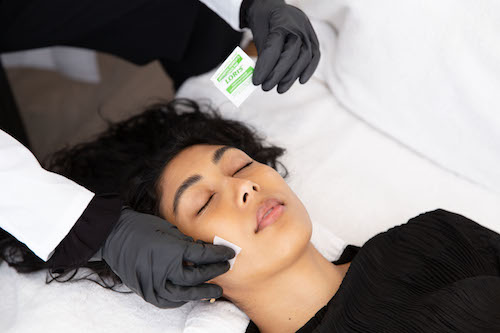
Avoid Chemical Peels, Lasers and Other Skin Treatments
The fewer skin treatments you have done in the several weeks before microneedling, the less likely your treatment will hurt due to skin sensitivity and irritation. Refrain from having a chemical peel, any type of laser treatment (hair removal or heat-based), electrolysis, getting a wax or using a hair removal cream in the 2 weeks before a microneedling appointment. All of these intensive and exfoliating treatments can irritate your skin and increase sensitivity.

You can shave the week of your session. However, make sure to put down the razor around 24 hours before microneedling to limit the chance of skin irritation. Use shaving cream and moisturize immediately after – especially if you plan on shaving a day or two before your treatment.
Know Your Menstrual Cycle
It’s common to have a lower pain tolerance around and during this time of the month. However, you might be surprised to find out that this sensitivity extends to your skin – even on your face. During the first few days of your cycle, prostaglandin levels (lipid hormones created at the site of an illness or injury) rise, which can stimulate inflammation and increased skin sensitivity.
Especially if you’re booking your first microneedling appointment, try to schedule it outside of this sensitive time frame around the few days before or during your period.
Manage Stress & Healthy Habits
Stress leads to muscle tension, which can make an otherwise uncomfortable experience considerably more painful. Trying your best to relax before your microneedling session can only help to make the process hurt less and, at worst, will save you some energy from anticipatory anxiety. Remember to take some deep breaths on the way to your appointment. If you’re nervous and have a few minutes, try meditating the day of your appointment and visualize not feeling the needles going into your skin.
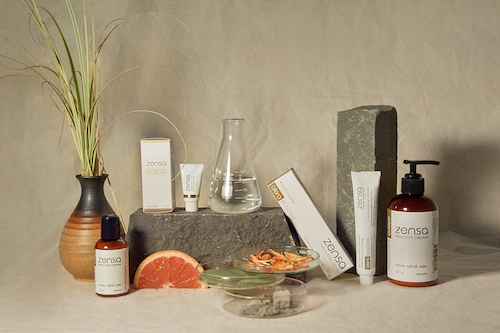
Your physical health habits also play a significant role. A healthy diet and lifestyle practices affect your mental health, can help decrease inflammation and boost hydration.These habits can make your skin more resilient, so treatments are less likely to hurt and can accelerate the healing process. Eat a variety of nutrient-dense, whole foods to help decrease inflammation in the body. This practice can make the entire microneedling process easier on your skin and body. Make sure to focus on getting a good amount of healthy fats, such as avocado, nuts and seeds – into your diet before microneedling to keep the skin supple and resilient. Microneedling can dry out the skin, so coming in with naturally-hydrated skin can only make the procedure less painful.
Avoid alcohol for at least 24 hours before your microneedling session, and do not consume any caffeine the day of your treatment.
FAQs:
What Are The Main Benefits of Microneedling?
Microneedling offers ant-aging benefits, including getting rid of wrinkles, fine lines, sun damage and hyperpigmentation. The treatment can help even skin texture and minimize the appearance of acne scars, stretch marks, other scarring or enlarged pores. Microneedling also aids in stimulating hair growth and is recommended for individuals managing alopecia areata (an autoimmune disorder that causes unpredictable, patchy hair loss). Learn more about the top benefits of microneedling HERE.
How Long Does Microneedling Take?
The procedure should take between 10-30 minutes at each microneedling session. It is recommended to have 4-6 microneedling sessions for optimal results. Each microneedling session should be booked around 4-6 weeks apart. Make sure to schedule appointments at least 1 month apart to ensure the skin has enough time to fully heal.
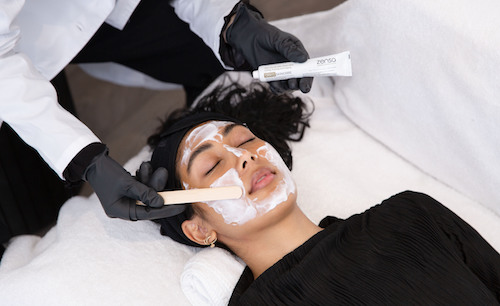
How Much Does Microneedling Cost?
Price is a deciding factor that can ultimately determine the office you call to book a session. On average, the typical microneedling treatment costs between $200- $700 per session. You will likely need around 4-6 sessions to see the full benefits from the treatment. Keep this information in mind before starting your microneedling journey, and remember that the costs can add up. However, it’s worth saving up a little more beforehand to ensure that you’re getting the best care possible. High-quality doctors and professionals are more likely to consult with you and ask questions before starting the treatment.
What Are The Side Effects of Microneedling?
The most common side effects from microneedling are mild skin irritation, temporary redness and mild swelling. Other potential, more severe side effects include skin peeling, bruising, bleeding, bruising and infection. While some mild, short-lived bleeding and bruising can be normal, contact your doctor immediately if these side effects don’t go away within a few days.
If you’re interested in learning more about the microneedling process or have an appointment in the books, discover what to expect before and after microneedling.